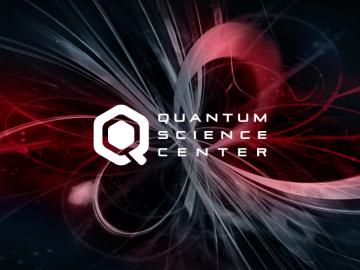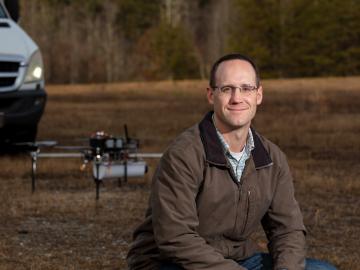
Filter News
Area of Research
- (-) National Security (19)
- (-) Neutron Science (18)
- (-) Supercomputing (57)
- Advanced Manufacturing (3)
- Biology and Environment (51)
- Biology and Soft Matter (1)
- Computational Biology (1)
- Computer Science (2)
- Electricity and Smart Grid (1)
- Energy Science (71)
- Functional Materials for Energy (1)
- Fusion and Fission (14)
- Fusion Energy (4)
- Isotopes (5)
- Materials (36)
- Materials for Computing (7)
- Nuclear Science and Technology (22)
- Nuclear Systems Modeling, Simulation and Validation (1)
- Quantum information Science (3)
News Topics
- (-) Biomedical (16)
- (-) Computer Science (45)
- (-) Environment (10)
- (-) Grid (8)
- (-) Machine Learning (12)
- (-) Nuclear Energy (3)
- (-) Quantum Science (15)
- 3-D Printing/Advanced Manufacturing (5)
- Advanced Reactors (1)
- Artificial Intelligence (17)
- Big Data (12)
- Bioenergy (8)
- Biology (9)
- Biotechnology (1)
- Buildings (3)
- Chemical Sciences (3)
- Coronavirus (17)
- Critical Materials (1)
- Cybersecurity (8)
- Energy Storage (7)
- Exascale Computing (8)
- Frontier (9)
- Fusion (1)
- High-Performance Computing (11)
- Isotopes (1)
- Materials (13)
- Materials Science (18)
- Mathematics (1)
- Microscopy (4)
- Molten Salt (1)
- Nanotechnology (11)
- National Security (15)
- Neutron Science (42)
- Partnerships (1)
- Physics (7)
- Polymers (2)
- Quantum Computing (7)
- Security (7)
- Simulation (5)
- Space Exploration (1)
- Summit (20)
- Transportation (2)
Media Contacts

The combination of bioenergy with carbon capture and storage could cost-effectively sequester hundreds of millions of metric tons per year of carbon dioxide in the United States, making it a competitive solution for carbon management, according to a new analysis by ORNL scientists.

Kübra Yeter-Aydeniz, a postdoctoral researcher, was recently named the Turkish Women in Science group’s “Scientist of the Week.”

Researchers at ORNL used quantum optics to advance state-of-the-art microscopy and illuminate a path to detecting material properties with greater sensitivity than is possible with traditional tools.

Two staff members at the Department of Energy’s Oak Ridge National Laboratory have received prestigious HENAAC and Luminary Awards from Great Minds in STEM, a nonprofit organization that focuses on promoting STEM careers in underserved

The Department of Energy has selected Oak Ridge National Laboratory to lead a collaboration charged with developing quantum technologies that will usher in a new era of innovation.

Horizon31, LLC has exclusively licensed a novel communication system that allows users to reliably operate unmanned vehicles such as drones from anywhere in the world using only an internet connection.

Pick your poison. It can be deadly for good reasons such as protecting crops from harmful insects or fighting parasite infection as medicine — or for evil as a weapon for bioterrorism. Or, in extremely diluted amounts, it can be used to enhance beauty.

ORNL researchers have developed an intelligent power electronic inverter platform that can connect locally sited energy resources such as solar panels, energy storage and electric vehicles and smoothly interact with the utility power grid.

A team led by Dan Jacobson of Oak Ridge National Laboratory used the Summit supercomputer at ORNL to analyze genes from cells in the lung fluid of nine COVID-19 patients compared with 40 control patients.

From materials science and earth system modeling to quantum information science and cybersecurity, experts in many fields run simulations and conduct experiments to collect the abundance of data necessary for scientific progress.


